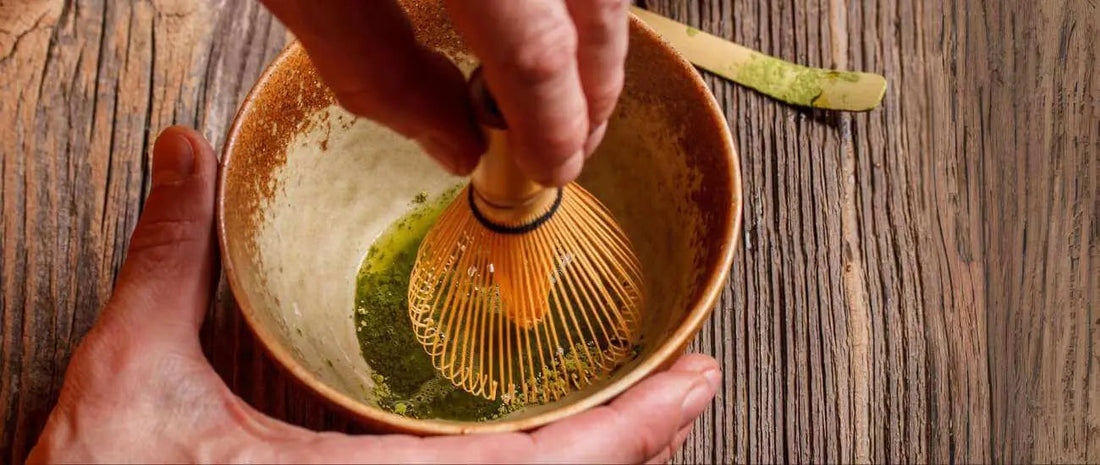
How is Matcha Made?
Share
Welcome to the fascinating world of matcha, the vibrant green powdered tea that has captivated tea enthusiasts around the globe. In this article, we will unravel the mysteries behind the question, "How is matcha made?" From the lush tea fields to your cup, join me on a journey that explores the meticulous processes and artistry involved in creating this unique and revered beverage.
Table of content
What Is Matcha?
To comprehend the art of making matcha, we must first understand what matcha is. Powdered green tea, or matcha, is primarily grown in Japan. The vibrant green color of matcha green tea powder and its rich flavor set it apart from other kinds of tea. Matcha begins with the cultivation of shade-grown tea leaves.
What Are the Processes for Matcha Production?
The production of matcha is a carefully choreographed dance of nature and craftsmanship. The process begins weeks before the harvest, as tea plants destined for matcha are shaded from the sun. Matcha's rich green color and nuanced flavor are derived from the stimulation of amino acids and chlorophyll by the shading.
When the tea leaves are at their peak maturity, expert harvesters handpick them. Only the finest, youngest leaves are selected in this step, which requires precision. To preserve their vibrant green color, these leaves undergo a meticulous steaming process.
The next phase involves drying the leaves, traditionally using stone mills to grind them into a fine powder. This traditional method, dating back centuries, ensures that matcha retains its characteristic smooth texture and intense flavor.
But the journey doesn't end there. Creating matcha powder takes about one hour, and the grinding process is also crucial. This slow and deliberate approach is essential for maintaining the quality and integrity of the final product.
Can All Tea Plants Be Used to Produce Matcha?
Not all tea plants are created equal when it comes to matcha production. The Camellia sinensis plants used for matcha must undergo a unique cultivation process to achieve the desired characteristics. The shading process, where the plants are covered to limit sunlight exposure, is a key factor that sets matcha apart.
Matcha plants are often grown in specific regions of Japan, like Uji, Kyoto, and Nishio. The combination of plant variety, shading, and meticulous harvesting techniques contributes to the distinctive flavor and aroma of matcha.
How to Make Matcha
Now that we've delved into the processes behind matcha production let's explore how you can make a perfect cup of matcha at home. While traditional Japanese tea ceremonies involve intricate rituals, you can enjoy matcha in a more relaxed setting.
Ingredients:
- High-quality matcha powder
- Hot water (not boiling)
- Bamboo whisk (chasen)
- Matcha bowl (chawan)
Steps:
Sift the matcha: Use a fine mesh or a specialized matcha sifter to ensure a smooth, lump-free powder.
Measure the matcha: Typically, a teaspoon (about 1-2 grams) of matcha powder is used per serving.
Add hot water: Pour a small amount of hot water (60-80°C) into the matcha bowl.
Whisk it up: With a bamboo whisk, whisk the matcha in a "W" or "M" motion until frothy.
Savor the moment: Your matcha is now ready to be enjoyed. Before you sip, take a moment to appreciate the vibrant color and rich aroma.
The key to a great cup of matcha lies in the quality of the powder and the whisking technique. Experiment with different matcha varieties and find the method that suits your taste.
Where Can You Buy Matcha?
As matcha continues to gain popularity, finding a reliable source for high-quality matcha becomes crucial. Matcha is available from a variety of online and offline retailers, but not all matcha are created equal. Opting for reputable sources, such as those that adhere to traditional cultivation and production methods, ensures that you experience the true essence of matcha.
Websites like Matcha Wellness and Nio Teas provide valuable insights into the production process and offer a curated selection of premium matcha products. When purchasing matcha, look for indicators of quality, such as vibrant color, fine texture, and a fresh aroma. Visit Leigh Leaf if you're interested in learning more about Matcha.
Final Words on How Matcha Is Made
Finally, the journey from tea fields to matcha bowl is a harmonious blend of nature, tradition, and craftsmanship. The meticulous processes, from shading the tea plants to grinding the leaves into a fine powder, contribute to the unique qualities that define matcha.
Understanding how matcha is made enhances our appreciation for this extraordinary beverage. Whether you savor it in a traditional Japanese tea ceremony or whip up a quick cup at home, each sip of matcha carries with it a story of centuries-old traditions and the dedication of those who masterfully cultivate and produce this green elixir.
So, the next time you indulge in a cup of matcha, take a moment to reflect on the journey it undertook to grace your palate with its vibrant flavor and cultural richness.


